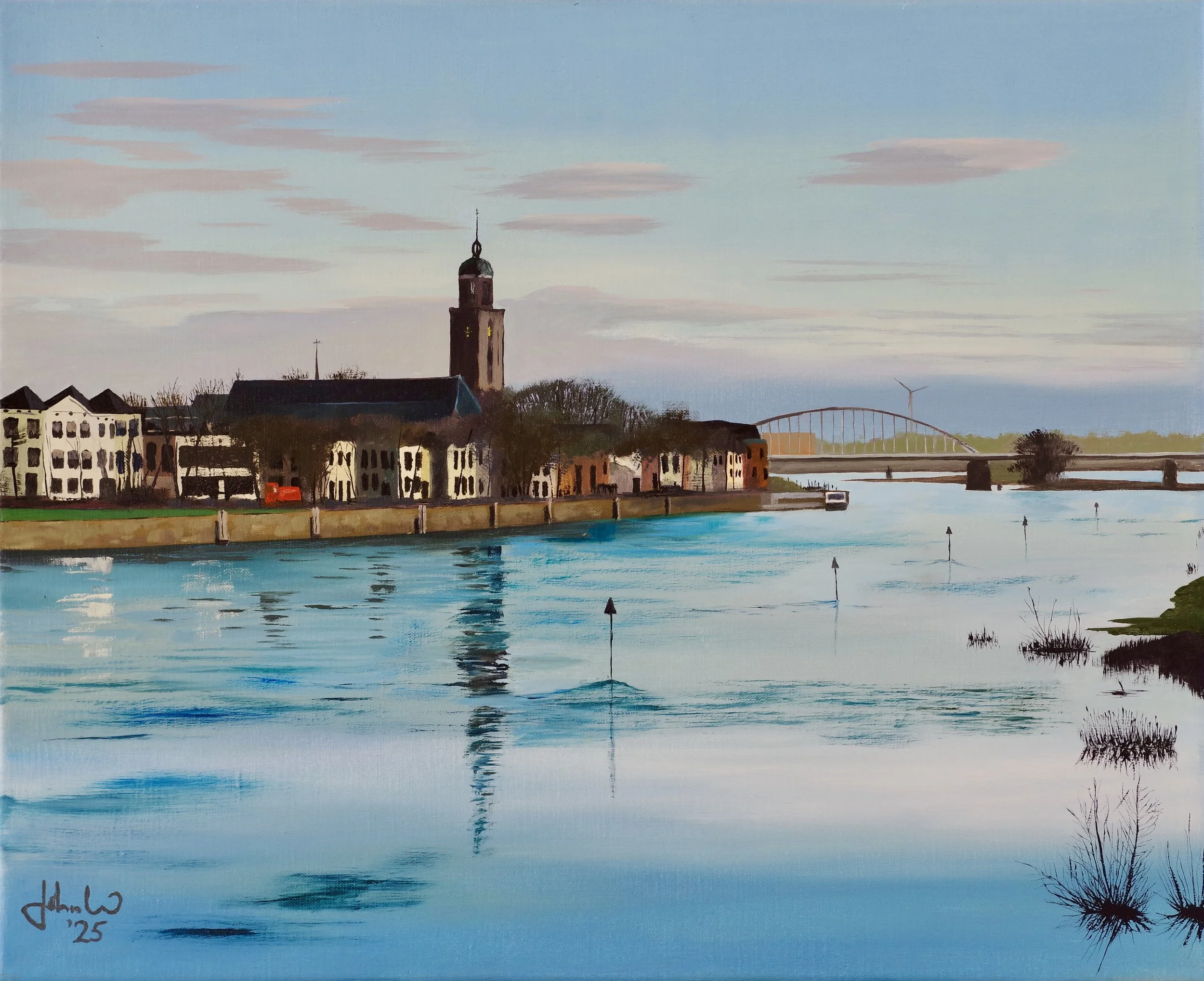Deventer and the Ijssel
When the Rhine flows from Germany into the Netherlands it splits into three distributary rivers. First the Waal splits from the Nederrijn (Lower Rhine). These two rivers flow westwards towards the delta in the south west of the country, splitting into more channels along the way, and eventually mingling with the Maas (known as the Meuse as it flows through France and Belgium) before flowing into the North Sea south and west of Rotterdam. Just before reaching Arnhem the Nederrijn again splits into two. The Nederrijn itself continues westwards through Arnhem, while the Ijssel strikes off on its solitary northward way towards the Ijsselmeer, formerly the Zuiderzee. (The Zuiderzee was once a salt water inlet of the North Sea, but was sealed off from the North Sea by the building of the Afsluitdijk in the 1930s, and has become a fresh water lake known as the Ijsselmeer.) Strangely enough, the Nederrijn, although taking its name from the parent river, is the smallest of these these three rivers as measured by the volume of water that passes through them, being marginally smaller than the Ijssel. By far the largest is the Waal, which flows past the ancient Roman city of Nijmegen. Who remembers Robert Redford saying Hail Mary’s while leading his men across a river in small canvas boats under fire from the opposite bank in ‘A Bridge Too Far’? That was the Waal at Nijmegen.
But the queen of these rivers is, in my by no means humble opinion, the Ijssel. In its 125km course from the Nederrijn to the Ijsselmeer, it passes through tranquil, pastoral countryside, past historic cities, holiday parks and yachting marinas, and under some iconic bridges. But first an interesting and unique geographical feature. At the city of Doesburg the Ijssel is joined by a tributary, the Oude (Old) Ijssel, which rises in northern Germany. It is thought that the Oude Ijssel was once the chief river flowing into the Zuiderzee, and that the southern section of the Ijssel (from the Nederrijn to present day Doesburg) was dug by the Romans as a link between these two rivers to provide water transport for their armies. Something else that distinguishes the Ijssel from the Waal, the Nederrijn and the other distributary rivers of the delta is that it has its own tributary as well as distributary rivers, which the others do not. And one last interesting geographical point. The Ijssel can be said to form part of the Rhine-Meuse-Scheldt delta, but it has its own mini-delta, breaking up into several channels as it approaches the Ijsselmeer.
Enough geography; this is an art blog. But art and geography are inseparable in my mind when I consider the beautiful and iconic sights that grace the banks of the Ijssel. There are no less than six Hanseatic League cities along the river or near to it, seven if you include Hasselt, which is linked by a canal to the Ijssel, and nine if you also include Hardewijk and Elburg, which aren’t on the Ijssel either but on the present day Veluwemeer, a branch of the Ijsselmeer. The Hanseatic League was an alliance of independent trading cities, controlling trade around the North and Baltic Sea coasts between the 13th and 17th centuries, so these cities are older than the nation state we now know as the Netherlands.
Following the river northwards from where it branches off from the Lower Rhine, we pass through Doesburg, Zutphen, Deventer, Hattem, Zwolle and finally Kampen. Of these, Deventer and Kampen vie for being my favourite. Both are beautiful, but Deventer just about takes first place by virtue of being a moderate bike ride from where I live, which is why it features so much amongst my paintings. It dates back to the 8th Century, when St Lebuinus first built a wooden church on the bank of the Ijssel. The present day St Lebuinus Church dates from the 15th Century. Even older is the St Nicholas Church (Bergkerk), distinguished by its twin spires and elevated location. The other old building of note is the weighing house (De Waag), which dates from the early 16th Century and overlooks De Brink, the large market square. This is now a museum, and houses some lovely old paintings. Finally we must mention the Wilhelmina Bridge, recognisable to film buffs as the bridge that stood in for the Arnhem bridge in the film ‘A Bridge Too Far.’
As Wordsworth once wrote, ‘Earth hath not anything to show more fair.’
Oh, and if you want to follow the Ijssel through all of these beautiful cities, the best way to do it (if you don’t have a boat) is by bike. The long distance cycle path LF3 (Hanzeroute) will take you all the way.
